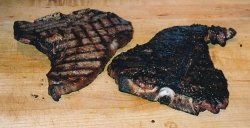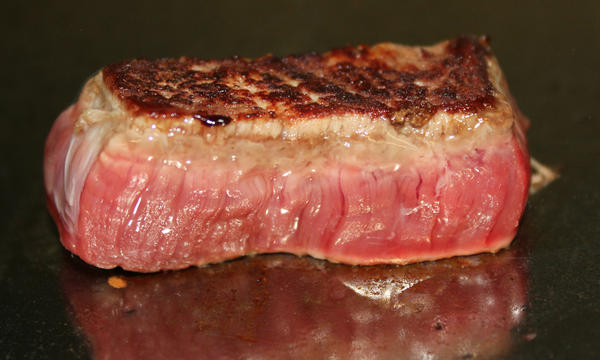Four meals at the pass, two perfectly cooked fillets of bass, two overcooked steaks. Three choices:
Nightmare 1. The expensive choice – scrap all four dishes, cook again.
Nightmare 2. Compromise your service quality – Serve the fish and make two of the party of four wait and watch their two friends eat.
Nightmare 3. Compromise your food quality – Hot hold the fish, serve again when the meat is cooked, or some variation on this solution.

We will try and explain what causes the problem above and how the French Plancha goes a long way in solving this problem.
A skilled chef always has his pan at the correct temperature or as close to it as he can. This is not easy, even a small scallop can cool the area of pan under it by as much as 100°C. The better the pan, the less temperature drop and the quicker the pan will recover to optimum frying temperature. The skill of the chef is in not letting the weakness of the pan spoil the quality of the cooked product. Whether he does this consciously or not, a good chef uses multiple skills listed in the process below to constantly control the pan temperature. He may use an oil that just smokes at a certain temperature, he then adds food to the pan knowing that the cooling effect of the food product and moving the pan to higher or lower heat will give him a good result. He can use some or all of the senses. Sight, smell, touch and sound, can all help him. If he gets this process wrong the results are below optimum.
The pan frying process
1. Heat pan to a temperature such that the food introduced does not take the oil too far below optimum frying temperature (indicated by greasy smoke)
2. Add food to pan and move pan to higher heat. As pan temperature recovers move pan to lower heat to avoid taking the oil in the pan past the optimum temperature.
3. Cook at optimum temperature for correct period.
4. If turning of the food is required repeat 2.,3.
5. Take perfectly cooked food to the pass.
6. Receive pat on back from head chef, you deserve it!
This is not easy, many chefs never truly master the pan frying process and many master it and don’t analyse it. Bright chefs and restaurateurs buy clever kitchen equipment to reduce the problems caused by poorly cooked food….. enter, the French plancha.
Quality and consistency:
The French plancha, is the natural way to avoid the problems caused by failure to follow the steps above, yes skill is still required but the head chef can set the plancha correctly and his chef only needs to control the timings, numbers 3 and 4. on the list above. This extra control the French plancha gives the head chef, is what improves the quality and consistency of food coming out of the kitchen.
The French plancha delivers a much more consistent frying temperature than a pan by virtue of its rapid heat recovery without risk of overheating. In addition to this, and unlike a pan, the head chef knows exactly what temperature surface his chef is cooking on. The head chef can also see the food his chef is cooking, because the sides of a pan are not obscuring his view. With this control of the cooking surface temperature head chef does not totally delegate the cooking process, only the timing and food handling part of it.
The end result is that apart from not having dozens of (often grubby) pans around the kitchen, we have that magical thing that chefs love.
CONSISTENCY
That is why many chefs rave about the French plancha.

